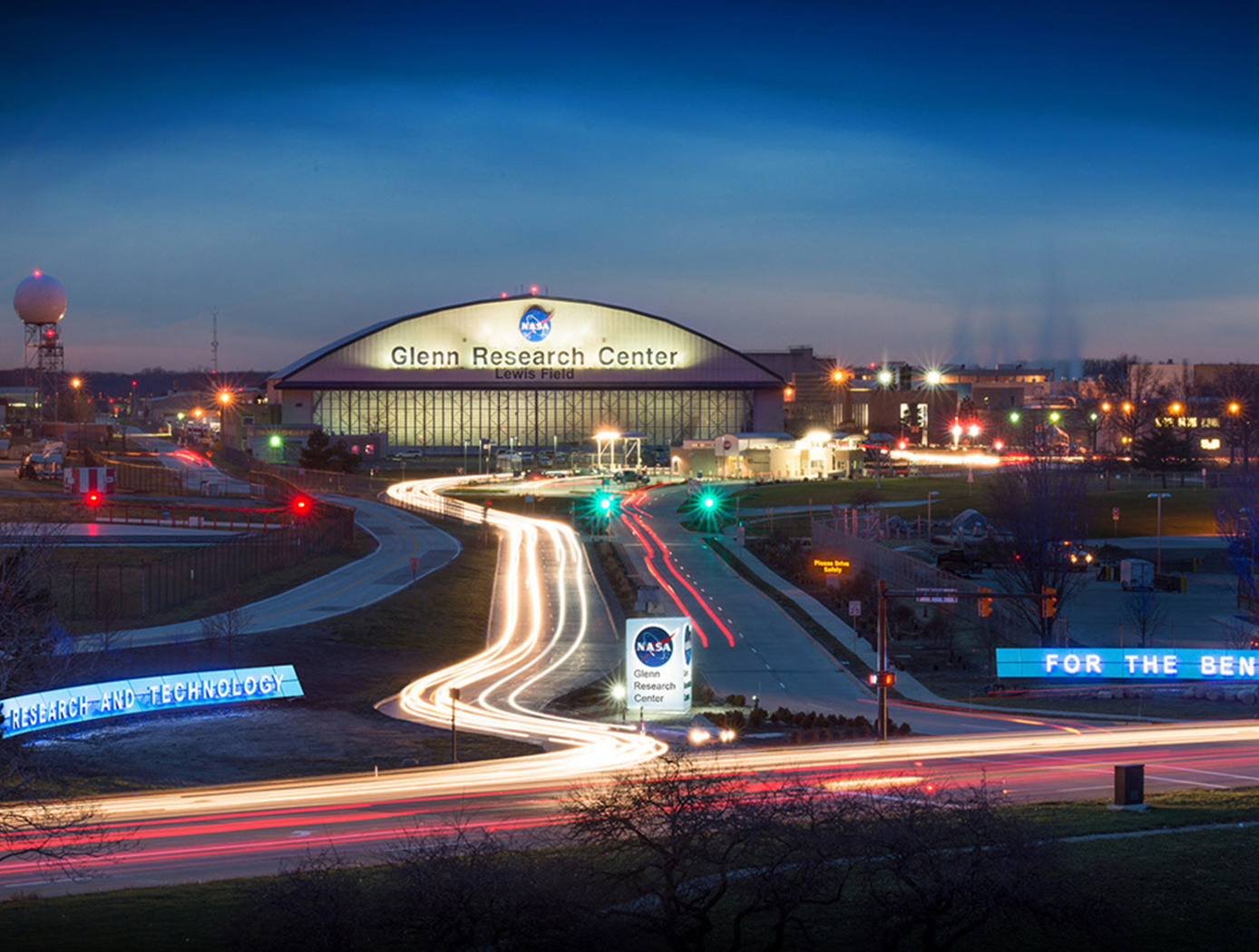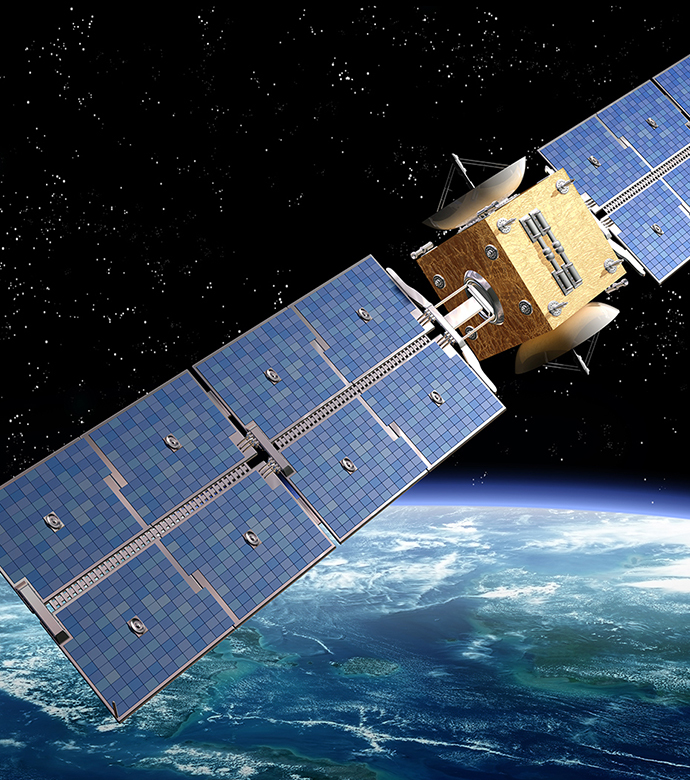
One of the best kept secrets in Cleveland and throughout Ohio is a NASA Center that dates back to the World War II era. The primary focus of NASA’s Glenn Research Center (GRC) was aircrafts to advance military capabilities.
 Since then, GRC has taken off with its research and development, becoming an authority in host of areas: materials and coatings; sensors; satellite and deep space communications; electrical and electronics, and power storage, and generation. While these technologies, at times, might seem otherworldly, they have many applications here on Earth. The Technology Transfer office at GRC helps companies license these technologies to use them in everyday products.
Since then, GRC has taken off with its research and development, becoming an authority in host of areas: materials and coatings; sensors; satellite and deep space communications; electrical and electronics, and power storage, and generation. While these technologies, at times, might seem otherworldly, they have many applications here on Earth. The Technology Transfer office at GRC helps companies license these technologies to use them in everyday products.
Some of those technologies available for licensing reflect the depth and breadth of the expertise at the various GRC facilities.
Materials and Coatings: This category encompasses a vast number of technologies available for license. NASA has looked to GRC for advancing materials and coatings since the 1960s. Then, in the early 1970s, a renewed interest in aeronautics to improve the performance of turbine blades prompted upgrades to GRC facilities over the next 30 years to support both the center’s basic research and large technology advancement programs.
Today, significant materials and coatings technologies are available to U.S. businesses. Two with tremendous potential are Aerogels – a lightweight insulation material, and the Oxide Dispersion Alloy – an additively manufactured alloy specifically for high-temperature applications. Both of these materials are expected to make big waves in the world of commercialization.
Aerogels, for example, were licensed by a company named Aerogel Technologies for use in applications as varied as aircraft interiors, shoe insoles, and clothing. The uses for both technologies span multiple industries and products – all it takes is some creativity to find the next great uses!
Sensors: GRC developed a microsensor suite to measure real-time changes in thickness and temperature on the surface of a material undergoing ablation. Corrosion, ablation, attrition, and erosion are examples of material damage that affects surface integrity and product performance. Such damage can compromise safety of lives and property. Reliable and efficient monitoring of surface temperature and the rate at which materials deteriorate is important, especially for safety critical systems.
This breakthrough technology introduces batch-fabricated, miniature sensors embedded and distributed over a large surface area of a material or product during the manufacturing process. The sensors can be utilized for test instrumentation or for an integrated in situ monitoring system.

Satellite and Deep Space Communications: Today's information-based culture wouldn't be possible without the vital links provided by satellites. The forefront of this critical communications technology is being shaped at GRC, where researchers are developing new high data-rate information superhighways that seamlessly connect Earth and space communication networks.
One such technology is the multimode directional coupler (MDC). This rugged and easily constructed waveguide is used to extract second- or higher-order harmonics. These are not generally used but they contain sufficient power to be amplified and transmitted to a receiving station on Earth. Technologists developed the MDC as a means to extract signal harmonics from a satellite transmitter, with minimum disruption to a fundamental frequency. The fact that the MDC allows the fundamental frequency to propagate with negligible power loss makes it a substantial upgrade over the conventional diplexer. This innovative approach could increase the number of terrestrial stations receiving signals from a single satellite, potentially increasing the return on the investment involved in launching and maintaining satellites.
Electrical and electronics: GRC has long been a leading driver of silicon carbide (SiC) technologies used in harsh-environment electronics. NASA was one of the first government agencies to fund and carry out SiC research, and because of that research, some of the first electronics landed on the surface of Venus and functioned for weeks in that hostile environment.
One such technology to come out of the SiC research is the Integrated Circuit Chip. This new generation of SiC logic and mixed signal integrated circuits (ICs) are unprecedented in the field of high-temperature electronics. Previously, SiC ICs could not withstand more than a few hours at about 900°F before degrading or failing. Asuccessfulprototype fabricated at the center consistently exceed 1,000 hours of continuous operation at about 900°F.
Power generation and storage: Since the 1940s, before most people even realized that the Space Age was coming, GRC was working on the power to get astronauts off the planet! And in the 1970s, when the nation became more aware of the use and availability of energy, center experts addressed those terrestrial concerns. Aeronautics and space systems and techniques were used to improve alternative energy sources such as wind turbines and solar cells.
One improvement in this category is the High-Power Density Solid Oxide Fuel Cell, a compact and versatile high-power density energy source. Another is the Fuel Cell Power Management, a technology that produces multiple power levels from a single fuel cell stack. GRC continues to lead innovation in power storage and generation for the next generation of explorers.
GRC drives the engine of innovation. The center's expertise continues to be critical to NASA's future missions in air and space. As private and commercial aviation expands, aircraft will need to meet new standards of performance and efficiency. When it’s time for human missions to Mars and beyond, GRC engineers and scientists will provide support in the form of advanced materials and coatings, sensors, communications, and more. No matter where that next horizon is, these pioneers and innovators will make it possible for us to travel beyond it.


